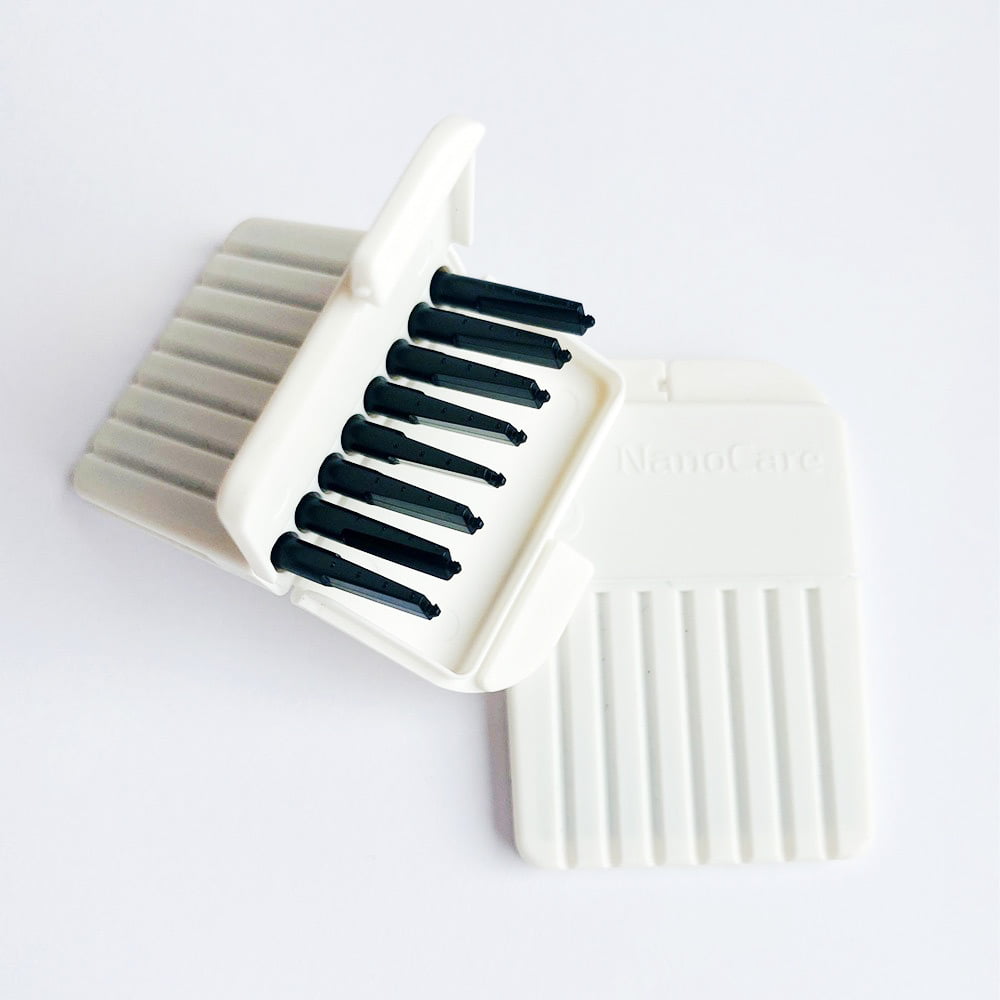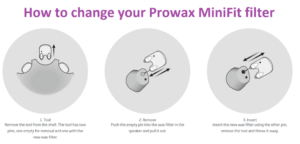Do you know what a wax guard, trap, or filter is?
A hearing aid wax guard is a small plastic screen that you attach to hearing aids in order to block off bits of ear wax, dust, or moisture from getting inside the device.
Wax guards are important as they block the sound outlet, helping to keep it clear; keeping hearing aids in good condition, and working optimally.
Hearing aid wax guards differ in the size of their diameter.
How often do they need changing?
We recommend changing your wax traps whenever you notice that the sound quality from your hearing aid is starting to dip.
There’s no rule in particular about how often you should be changing your wax guards, traps or filters as it varies from person to person.
Some people can get a lot less wax than others, so they’d probably be able to change theirs every few months whereas people who get more ear wax build-up would probably be needing to change their wax traps at least once a month.
We’re here to help
Here at Hearing Aid Accessories, we offer a wide range of wax guards- these can all be found here >> https://www.hearingaidaccessory.com/product-category/guards-traps-filters/ <<
Here are some of our best selling products:
1) Oticon ProWax MiniFit Wax Filters
With an impressive 5 ½ star rating, our Oticon wax guards are suitable for all Oticon miniRITE hearing aids, including the new Oticon More miniRITE hearing aid.
We sell these as an individual pack (includes 6 filters) as well as in bundles that can be found in our special offers section.
How to change it:
2) Cerustop Wax Guards
Cerustop wax guards are another favorite of our customers as they help to repel ear wax and moisture.
They’re suitable for a range of hearing aids including ones from brands such as Widex, Phonak, Unitron, and ReSound. Feel free to contact us at 01455 245749 to check if they’re compatible with your hearing aids.
How to change it:
3) CeruSheild Wax Filters for Marvel & Paradise Hearing Aids
The CeruSheild Wax Filters come as a packet of 8 filters and have a disposable slot to place used filters.
They’re compatible with Phonak Marvel and Phonak Paradise hearing aids.
How to change it:
4) Widex NanoCare Wax Guards (patented design)
The Widex patented wax guard system enhances the performance of your Widex hearing aids and increases their lifecycle.
These wax guards are designed for Widex hearing aids and are suitable for both ‘Behind the Ear’ and ‘In the Ear’ hearing aids.
How to change it:
They have an easy 2 step removal and insertion. Each stick also has 2 end tips.
STEP 1: The empty tip is used first to remove your used wax guard from your receiver. Press onto the wax guard with the empty stick end firmly. When lifted the used wax guard should then be released.
STEP 2: The white end is the end with your new wax guard. Once the used wax guard is removed you can insert the new guard by inserting the white end into the receiver firmly. When you remove the stock the wax guard will stay in place.
5) Starkey Hear Clear
These wax guards are designed for Starkey hearing aids and are suitable for both ‘Behind the Ear’ & ‘In the Ear’ Widex hearing aids.
Each stick allows you to remove the used wax guard and insert a fresh new wax guard.
How to change it:
They also have an easy 2 step removal and insertion and each stick also has 2 end tips. To change it you have to follow the same steps you would take in the previous instructions for the Widex Nano care wax guards.
6) Micro PureGuard HF4 Wax Guard Filters
These wax guard filters come with the option to choose either a left set or a right set, depending on which ear you need it for. Each pack includes 15 wax guards.



